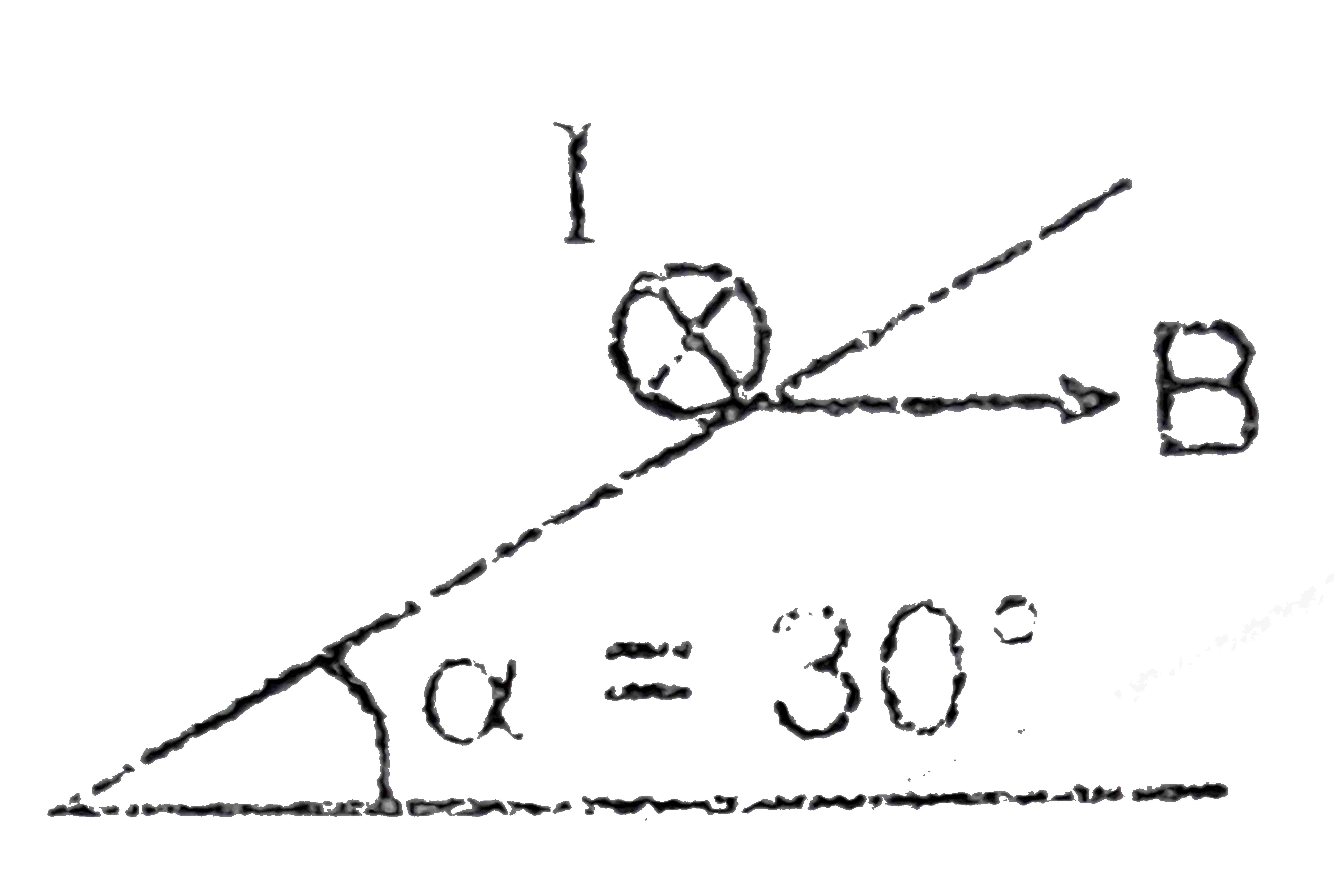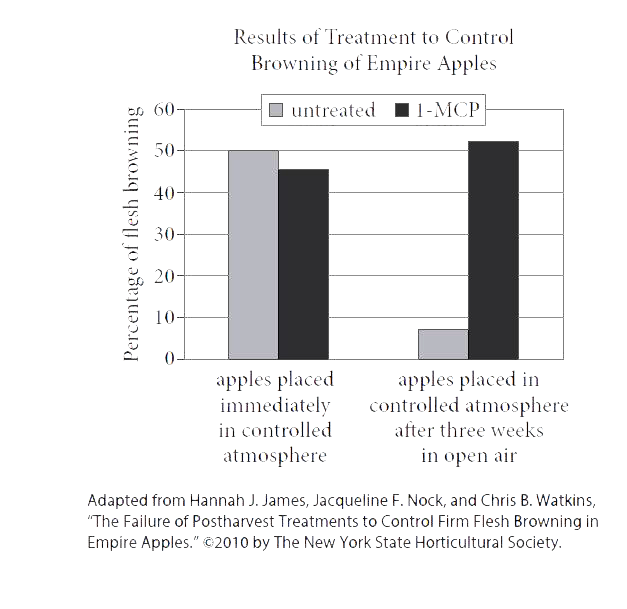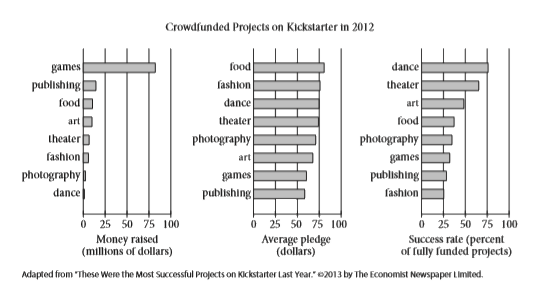Fruit for a dessert costs $1.20 a pound. If 5 pounds of fruit are needed to make a dessert that serves 18 people, what is the cost of the fruit needed to make enough of the same dessert to serve 24 people?
The correct Answer is:8
To solve the problem step by step, we will follow these calculations:
Step 1: Determine the amount of fruit needed per person
We know that 5 pounds of fruit are needed to serve 18 people. To find out how much fruit is needed for one person, we divide the total amount of fruit by the number of people:
Fruit per person=5 pounds18 people=518 pounds per person
Step 2: Calculate the total amount of fruit needed for 24 people
Now that we know how much fruit is needed for one person, we can find out how much is needed for 24 people by multiplying the amount of fruit per person by 24:
Total fruit for 24 people=24×518=12018=203 pounds
Step 3: Calculate the cost of the fruit
The cost of the fruit is given as $1.20 per pound. To find the total cost for the amount of fruit needed for 24 people, we multiply the total weight of the fruit by the cost per pound:
Cost=(203 pounds)×(1.20 dollars per pound)
Calculating this gives:
Cost=203×1.20=20×1.203=243=8 dollars
Final Answer
The cost of the fruit needed to make enough dessert to serve 24 people is $8.
---
We know that 5 pounds of fruit are needed to serve 18 people. To find out how much fruit is needed for one person, we divide the total amount of fruit by the number of people:
Now that we know how much fruit is needed for one person, we can find out how much is needed for 24 people by multiplying the amount of fruit per person by 24:
The cost of the fruit is given as $1.20 per pound. To find the total cost for the amount of fruit needed for 24 people, we multiply the total weight of the fruit by the cost per pound:
The cost of the fruit needed to make enough dessert to serve 24 people is $8.
Topper's Solved these Questions
- PROBLEM SOLVING AND DATA ANALYSISBOOK - ENGLISH SATCHAPTER - PROBLEM SOLVING AND DATA ANALYSISEXERCISE - Multiple Choice
128 Videos
- PROBLEM SOLVING AND DATA ANALYSISBOOK - ENGLISH SATCHAPTER - PROBLEM SOLVING AND DATA ANALYSISEXERCISE - EXERICSE
80 Videos
- PROBLEMS IN CONTEXT BOOK - ENGLISH SATCHAPTER - PROBLEMS IN CONTEXT EXERCISE - PRACTICE TEST
10 Videos
Similar Questions
If the density of methanol is 0.793kgL−1 what is its volume needed for making 2.5 L of its 0.25M solution?
View SolutionThe figure shows a conductor of weight 1.0N& length L=0.5m placed on a rough inclined plane making an angle 30∘ with the horizontal so that conductor is perpendicular to a uniform horizontal magnetic field of induction B=0.10T.The coefficient of static friction betwen the conductor inside the plane of is 0.1. A current of l=10A flows through the conductor inside the plane of this paper as shown.What is the force needed to be applied parallel to the inclined plane to keep the conductor at rest?

View Solution
Knowledge Check
A group of p people plan to contribute equality to the purchase of gifts that costs d dollars. If n of the p people decide not to contribute, by what amount in dollars does the contribution needed from each of the remaining people increase?
Adp−nBpdp−nCpdn(p−n)Dndp(p−n)The amount of money a performer earns is directly proportional to the number of people attending the performance. The performer earns $120 at a performance where 8 people attend.
The performer uses 43% of the money earned to pay the costs involved in putting on each performance. The rest of the money earned is the performer’s profit. What is the profit the performer makes at a performance where 8 people attend?A51.6B57C68.4D77How Do You Like Those Apples? Marketed as SmartFresh, the chemical 1-MCP (1-methylcyclopropene) has been used by fruit growers since 2002 in the United States and elsewhere to preserve the crispness and lengthen the storage life of apples and other fruit, which often must travel long distances before being eaten by consumers. 23 1-MCP lengthens storage life by three to four times when applied to apples. This extended life allows producers to sell their apples in the off-season, months after the apples have been harvested. And at a cost of about one cent per pound of apples, 1-MCP is a highly cost-effective treatment. However, 1-MCP is not a panacea for fruit producers or sellers: there are problems and limitations associated with its use.[1] 1-MCP works by limiting a fruit’s production of ethylene, 24 it is a chemical that causes fruit to ripen and eventually rot. [2] While 1-MCP keeps apples 25 tight and crisp for months, it also limits 26 their scent production. [3] This may not be much of a problem with certain kinds of apples that are not naturally very fragrant, such as Granny Smith, but for apples that are prized for their fruity fragrance, such as McIntosh, this can be a problem with consumers, 27 that will reject apples lacking the expected aroma. [4] But some fruits do not respond as well to 1-MCP as others 28 did, and some even respond adversely. [5] Furthermore, some fruits, particularly those that naturally produce a large amount of ethylene, do not respond as well to 1-MCP treatment. [6] Take Bartlett 29 pears, for instance, unless they are treated with exactly the right amount of 1-MCP at exactly the right time, they will remain hard and green until they rot, and consumers who experience this will be unlikely to purchase them again. 30 Finally, researchers have found that 1-MCP actually increases susceptibility to some pathologies in certain apple varieties. For example, Empire apples are prone to a condition that causes the flesh of the apple to turn brown. Traditionally, apple producers have dealt with this problem by leaving the apples in the open air for three weeks before storing them in a controlled atmosphere with tightly regulated temperature, humidity, and carbon dioxide levels. As the graph shows, the flesh of untreated Empire apples that are first stored in the open air undergoes 31 roughly five percent less browning than the flesh of untreated Empire apples that are immediately put into storage in a controlled environment. However, when Empire apples are treated with 1-MCP, 32 their flesh turns brown when the apples are first stored in the open air, though not under other conditions. Although researchers continue to search for the right combination of factors that will keep fruits fresh and attractive, 33 the problem may be that consumers are overly concerned with superficial qualities rather than the actual freshness of the fruit.

The writer wants a conclusion that conveys how the shortcomings of 1-MCP presented in the passage affect the actions of people in the fruit industry. Which choice best accomplishes this goal?ANO CHANGEBmany of the improvements to fruit quality they have discovered so far have required trade-offs in other properties of the fruit.Cfor now many fruit sellers must weigh the relative values of aroma, color, and freshness when deciding whether to use 1-MCPDit must be acknowledged that 1-MCP, despite some inadequacies, has enabled the fruit industry to ship and store fruit in ways that were impossible before.
A plastic box 1.5 m long, 1.25 m wide and 65 cm deep is to be made. It is to be open at the top. Ignoring the thickness of the plastic sheet, determine:
(i) The area of the sheet required for making the box.
(ii) The cost of sheet for it, if a sheet measuring 1 m2 costs Rs 20.
View SolutionA plastic box 1.5m long, 1.25m wide and 56cm deep is to be made. It is to be open at the top. Ignoring the thickness of the plastic sheet, determine: The area of the sheet required for making the box. The cost of sheet for it, if a sheet measuring 1m2 costs Rs.20.
View SolutionA plastic box 1.5 m long, 1.25 m wide and 65 cm deep is to be made. It is to be open at the top. Ignoring the thickness of the plastic sheet, determine: The area of the sheet required for making the box. The cost of sheet for it, if a sheet measuring 1 m2 cost Rs.20
View SolutionCrowdfunding is a popular way to raise money using the Internet The process sounds simple an artist, entrepreneur, or other innovator takes his or her ideas straight to the public via a crowdfunding webs. The innovator creates a video about the project and offers, in exchange for donations, a series of perks," from acknowledgment on a social media site to a small piece of art. Many crowdfunding programs are all-or-nothing, In other words, the innovator must garner 100 percent funding for the project or the money is refunded to the donors. At it's best, the system can give creators direct access to millions of potential backers. The home page of one leading crowdfunding site features a project to manufacture pinhole cameras on a 3-D printer. Ea The idea is obviously very attractive. An obscure method of photography may be made available to many with little expense. Within weeks, the project was 621 percent funded. in contrast, on the same page, a small Brooklyn performance venue is attempting to raise money for its current season. The venue features works of performance art showcased in a storefront window. Those who have seen the space consider it vital. low ever, that group may not be large enough, with iu•t fourteen days to go in the fund raising period, the campaign is only 46 percent funded.
Artists such as these Brooklyn performers find that crowdfunding exacerbates problems that already exist. El Work, that is easily understood and appreciated, is supported, while more complex work goes unnoticed. Time that could be used creating art is spent devising clever perks to draw the attention of potential contributors. 28 In addition, audiences may contain many 'free riders," they did not make contributions.
ironically, the success of crowdfunding may weaken overall funding for the arts if people begin to feel that paying for the art 30 loved by them is someone else's responsibility. til One innovative playwright has woven the deficiencies of the system into her crowdfunding model. 121 Though the price for her tickets was higher than that of tickets for comparable shows, it was still affordable to most theatergoers—and reflected the real cost of the performance. [3] She presented the total cost for producing her play on a crowdfunding site. [4] Then she divided the total cost by the number of people she expected to attend the performance. [5) The result of the calculation was the minimum donor price, and only donors who paid at least the minimum ticket price were allowed to attend the performance. [6) By subverting the presumption that money used for her project is an altruistic donation, the playwright showed that W our work has monetary value to those who enjoy It.

Which choice offers an accurate interpretation of the data in the graph?
View SolutionCrowdfunding is a popular way to raise money using the Internet The process sounds simple an artist, entrepreneur, or other innovator takes his or her ideas straight to the public via a crowdfunding webs. The innovator creates a video about the project and offers, in exchange for donations, a series of perks," from acknowledgment on a social media site to a small piece of art. Many crowdfunding programs are all-or-nothing, In other words, the innovator must garner 100 percent funding for the project or the money is refunded to the donors. At it's best, the system can give creators direct access to millions of potential backers. The home page of one leading crowdfunding site features a project to manufacture pinhole cameras on a 3-D printer. Ea The idea is obviously very attractive. An obscure method of photography may be made available to many with little expense. Within weeks, the project was 621 percent funded. in contrast, on the same page, a small Brooklyn performance venue is attempting to raise money for its current season. The venue features works of performance art showcased in a storefront window. Those who have seen the space consider it vital. low ever, that group may not be large enough, with iu•t fourteen days to go in the fund raising period, the campaign is only 46 percent funded.
Artists such as these Brooklyn performers find that crowdfunding exacerbates problems that already exist. El Work, that is easily understood and appreciated, is supported, while more complex work goes unnoticed. Time that could be used creating art is spent devising clever perks to draw the attention of potential contributors. 28 In addition, audiences may contain many 'free riders," they did not make contributions.
ironically, the success of crowdfunding may weaken overall funding for the arts if people begin to feel that paying for the art 30 loved by them is someone else's responsibility. til One innovative playwright has woven the deficiencies of the system into her crowdfunding model. 121 Though the price for her tickets was higher than that of tickets for comparable shows, it was still affordable to most theatergoers—and reflected the real cost of the performance. [3] She presented the total cost for producing her play on a crowdfunding site. [4] Then she divided the total cost by the number of people she expected to attend the performance. [5) The result of the calculation was the minimum donor price, and only donors who paid at least the minimum ticket price were allowed to attend the performance. [6) By subverting the presumption that money used for her project is an altruistic donation, the playwright showed that W our work has monetary value to those who enjoy It.
Which choice most effectively combines the underlined sentences?
View Solution
